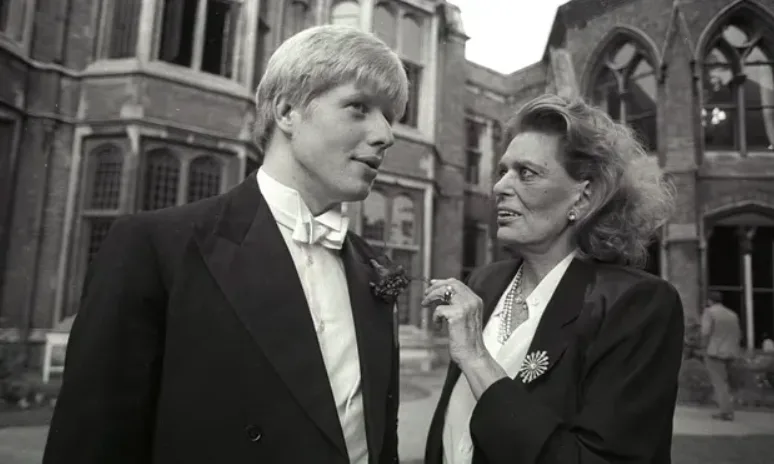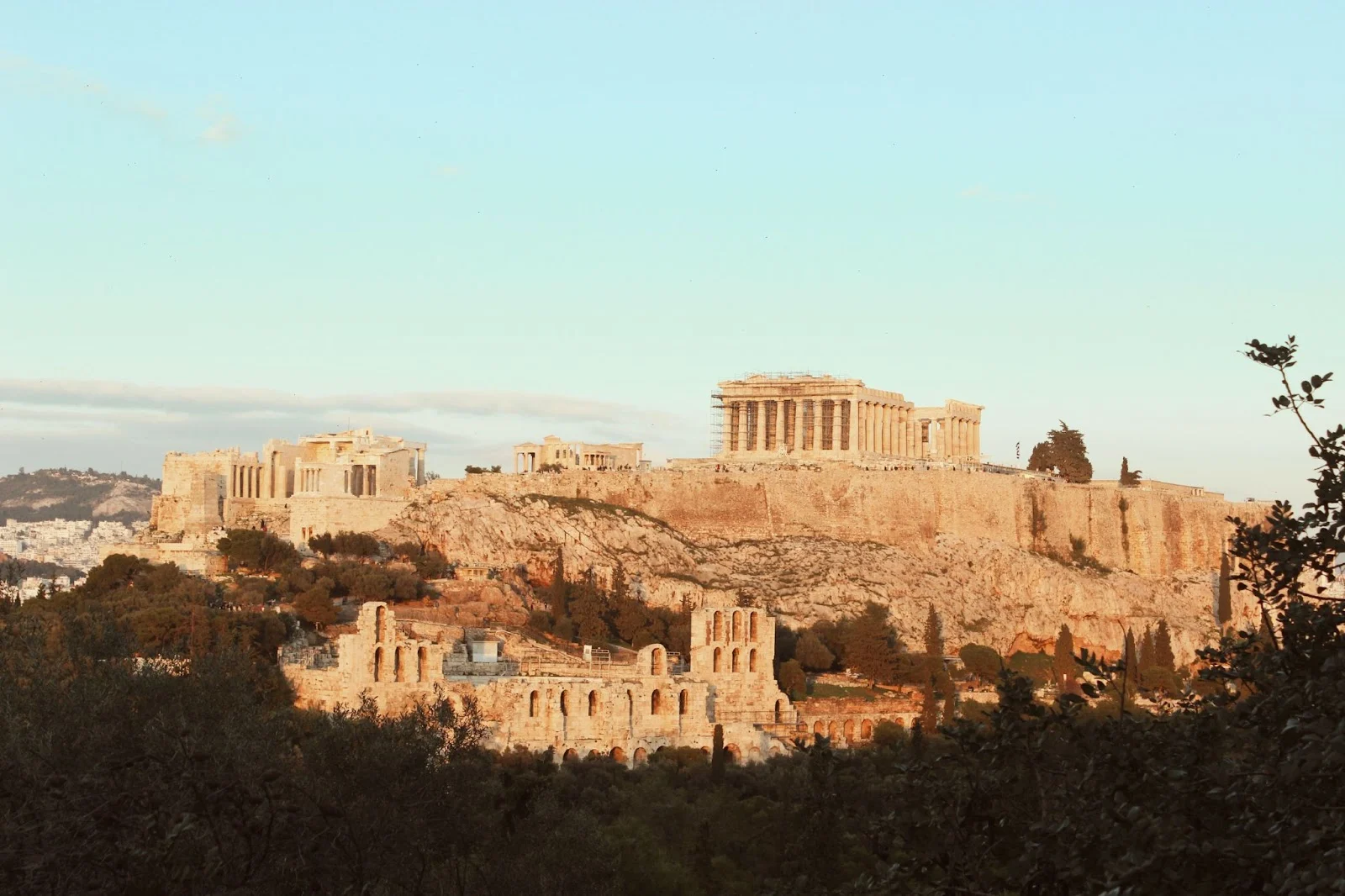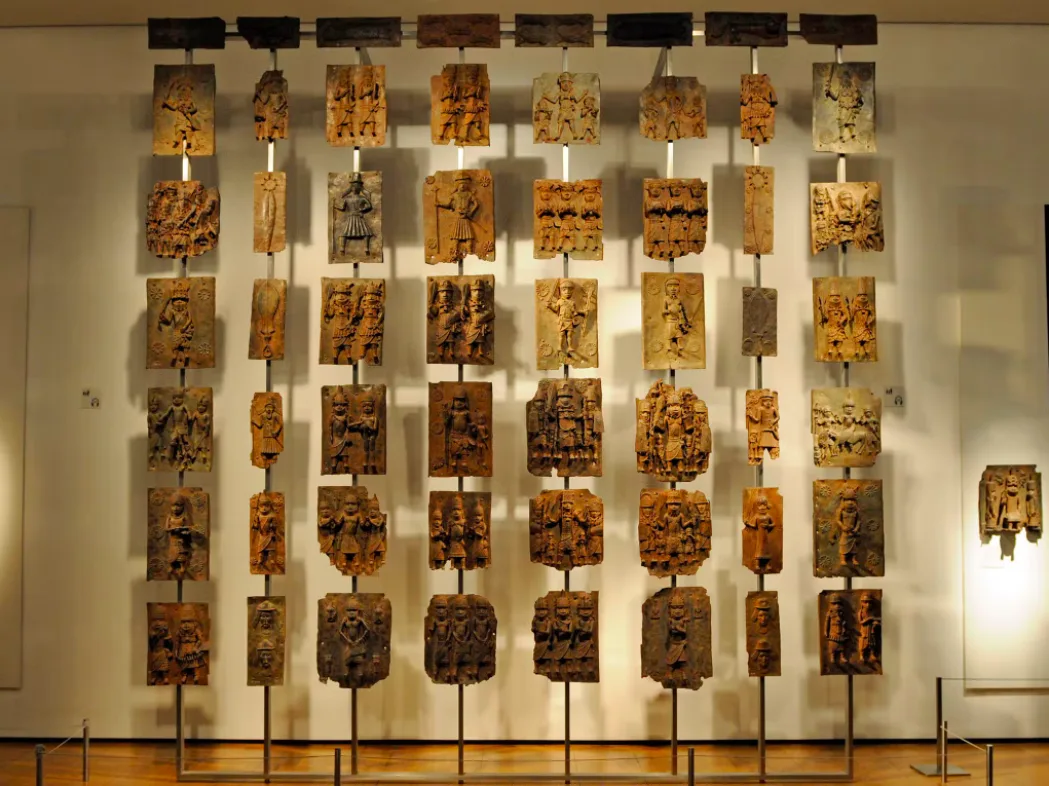Our Prime Minister is a hypocrite. No, I’m not talking about Partygate (although the same sentiment applies). What I’m talking about are his public comments on the Parthenon Marbles debate. For some brief background, the Parthenon Marbles (a.k.a. The Elgin Marbles) debate is a discussion regarding the return of ancient Greek sculptures, currently at the British Museum, to their place of origin: Athens. This is one of the most prominent museum-related items in mainstream news and the response from the British establishment speaks volumes about this country’s attitude towards its problematic colonial past.
But first, back to Boris. In 1986, while a student at Oxford University and President of the Oxford Union, passionate classicist Johnson wrote a piece strongly advocating the marble’s return to Athens:
“The Elgin marbles should leave this northern whisky-drinking guilt-culture, and be displayed where they belong: in a country of bright sunshine and the landscape of Achilles, ‘the shadowy mountains and the echoing sea’ (...) They will be housed in a new museum a few hundred yards from the Acropolis. They will be meticulously cared for. They will not, as they were in the British Museum in 1938, be severely damaged by manic washerwomen scrubbing them with copper brushes.”
He also invited Melina Mercouri, Greek Minister for Culture at the time, to speak at the Union. Mercouri was a huge proponent for the marble’s return to Greece and reinvigorated the campaign during her time as Minister for Culture. However, during Johnson’s time as Mayor of London and now as Prime Minister, he has taken a complete U-turn on the issue, siding instead with the British Museum’s position that the marbles should remain in situ.

This drastic reversal in opinion ultimately comes down to diplomacy and adherence to the ‘official’ position of the UK government. This position encapsulates Britain’s inability to reconcile with its past mistakes and look past its national pride to face the cultural and human violence it has wrought on other nations. The legacy of this violence is present in objects retained by the British Museum.
How did the marbles come to be in Britain?
To understand the complexity of this debate, we must tell the story of how the marbles came to be in the British Museum in the first place. In the very early nineteenth-century, Lord Elgin, the British Ambassador to the Ottoman Empire, obtained a permit from the Ottoman authorities to remove around half of the sculptures from the stone edifices of the Parthenon temple. The sticking point of this, as the current Greek government continues to point out, is that Greece was under Ottoman governance at the time the permits were issued, not Greek governance. While the Ottoman government was clearly happy with Elgin taking the marbles, the current Greek government is not. They are clear in their position: they want the marbles returned.

Elgin went bankrupt shortly after returning to Britain, he sold the marbles to the British government in 1816 who then placed them in the trusteeship of the British Museum. Greece argues the acquisition was illegal and akin to looting, whereas the UK Government and the British Museum maintain that they were acquired legally. Greece gained independence in 1832 and first requested for the marbles to be returned in 1983, citing the illegality of their acquisition.
The British Museum states that the Greek government has never requested a loan of the marbles; if they did, they state they would consider it in line with their normal loan conditions. Except, it’s not that simple from a Greek perspective. If Greece were to request a loan from the British Museum they would state, by implication, that they accepted the museum’s ownership of the marbles. However, because they were taken illegally, Greece refuses to recognise that the marbles are owned by the British Museum. This is clearly a more complex issue than it first appears and there has not been much movement towards a solution in the past 40 years, since Mercouri began her campaign.
The turning tide of cultural restitution
The Parthenon Marbles debate is not an isolated incident. Requests for the return of museum artefacts with contested histories is a major topic in the sector right now. Objects such as the Benin Bronzes, which were looted from Benin City in the 1800s by British troops during a violent raid, are being requested for return. The British Museum possesses a significant portion of these highly important cultural objects and is making no moves to pursue restitution. Meanwhile, other institutions, such as the Glasgow Life Museum, have taken decisive action to return looted objects to their cultures of origin.

Recently, the Smithsonian Institute premiered their new returns policy, which prioritises ethical considerations over legal factors. In a statement, the Smithsonian recognised that ethical standards have changed throughout history and what was conceived as ethical in the 1800s often does not reflect modern standards. As such, they state that they will consider all restitution requests with transparency and contemporary moral standards. This, in my opinion, should be the attitude of all similar institutions.
The Parthenon Marbles have generally received more media and political attention than non-European objects such as the Benin Bronzes. It’s worth asking why that is. Is it because the European context of the Parthenon Marbles is easier for us to reconcile with our comfortable national image of Britain? Yes, the marbles were removed in a morally dubious manner, but their removal was not accompanied by the horrific bloodshed and violence seen in the looting of the Benin Bronzes. Situated in the British Museum, the Bronzes represent the extreme colonial violence Britain wrought on other nations and forces us to stare our colonial past directly in the face. Many colonial-related objects in our museums have a deep history of violence associated with them which is never reflected in their display behind glass cabinets. It’s time for institutions such as the British Museum to step up and acknowledge these acts of violence and make concerted steps towards repatriation.
A legal impasse
The Benin Bronzes and the Parthenon Marbles are, admittedly, very different cases with very different circumstances. That being said, an ethics-led returns policy is what is generally needed here, as seen at the Smithsonian Institute. The British Museum’s returns policy is enmeshed in UK law, making repatriation a uniquely legal issue (which is not the case for the majority of museums).
The British Museum Act of 1963 governs the museum’s returns policy; it states only a limited number of reasons for an object to be removed from the museum collection. Section 5 of the Act reads as follows:
The Trustees of the British Museum may sell, exchange, give away or otherwise dispose of any object vested in them and comprised in their collections if—
- the object is a duplicate of another such object, or
- the object appears to the Trustees to have been made not earlier than the year 1850, and substantially consists of printed matter of which a copy made by photography or a process akin to photography is held by the Trustees, or
- in the opinion of the Trustees the object is unfit to be retained in the collections of the Museum and can be disposed of without detriment to the interests of students:
In this Act from the 1960s, there is no space given for restitution concerns. Admittedly, the museum Trustees have the power to ‘dispose’ of any objects they deem ‘unfit’, but this is not the language of restoring objects to their home nations. However, any change in the museum’s deaccession policy would have to be changed in law, which makes this situation a political one. Herein lies the issue.
The British Museum is becoming increasingly synonymous with looted objects and cultural heritage displayed with colonial connotations. This speaks volumes about the institutional attitude to colonialism and heritage in this country. The UK establishment gives the impression that because these important pieces of art ended up in the British Museum at all, Britain has the right to retain them for the world to see. This has to change. By keeping these objects in the national collection, the British Museum (and by default the British establishment) is condoning the circumstances under which they were taken. It’s essentially like waving a massive flag with ‘Colonial violence was ok!’ written on it.
The white western world is becoming increasingly aware of and accountable for colonial atrocities committed in the past and the museum sector is slowly acknowledging its part in that. Museum professionals are, for the most part, aware of these issues and are striving to hold their institutions to account. However, policy change doesn’t happen overnight. When we look at the British Museum, there is no clear concerted effort to repatriate any of its objects. We need only read their ‘contested objects’ web page to get a sense of their attitude towards this.
Now what?
What is left to do then? The marbles, and other contested objects in the British Museum’s collection show no signs of being returned to their nations of origin. As visitors, it is easy to feel powerless. We are told that these collections belong to the public, but the majority of us can acknowledge that most of the objects in the British Museum do not originate from Britain at all.
Here’s what I recommend we can do. Next time you visit a museum, look at the objects on display, I mean really look. Read the accompanying information and ask yourself: ‘Where did this come from?’ ‘Who made this?’ ‘How did it end up here?’ If these are questions you cannot answer yourself, ask a member of staff. If they don’t know, look it up yourself. Perhaps this will also prompt the staff member to find out more. It is only by asking difficult questions, and encouraging others to do the same, that we can become aware of the object’s histories beyond their place in a museum case. Museums are about starting conversations. They are about giving people space to discuss culture, art, and history as well as allowing people to walk into the museum space and recognise their own heritage and culture. This is something everyone has the right to access.
In the case of the British Museum, unprecedented legal change is needed to move forward with repatriation, as well as a distinct change in attitude from the British establishment. As a classicist and historian, Boris Johnson’s intervention could have set the precedent for a productive conversation about the future of the Parthenon Marbles with the British Museum. Instead, his drastic U-turn indicates that the ‘official position’ rules. A position which is ultimately hypocritical, damaging, and a glaring demonstration of Britain's inability to accept the negative aspects of its history.
Since writing this article there have been further developments in the Parthenon Marbles debate with the British Museum denying that the marbles were removed violently, countering clear primary evidence from the period. The British Museum has agreed to enter talks with the Greek Government, mediated by UNESCO, but these talks do not suggest any change in opinion from the British Museum. It seems this debate will remain at an impasse for some time yet.
Further Reading:
For more on the Benin Bronzes and the case for their restitution, see Dan Hicks’ book The Brutish Museums.
For more about the importance of restitution and acknowledging colonial histories, see Alice Procter’s book The Whole Picture.
Written by
Lydia HousleyMuseums and heritage professional interested in all things history, culture, and society. Loves reading, baking, and dancing.
Weekly emails
Get more from Lydia
The Fledger was born out of a deep-seated belief in the power of young voices. Get relevant views on topics you care about direct to your inbox each week.
Write at The Fledger
Disagree with Lydia?
Have an article in mind? The Fledger is open to voices from all backgrounds. Get in touch and give your words flight.
Write the Contrast

